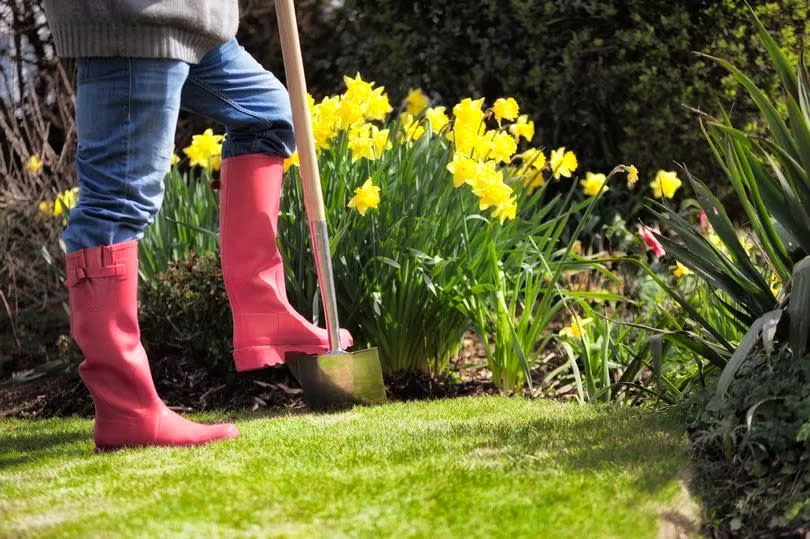Five common garden plants that could be dangerous for people, pets and homes

Experts are warning that some seemingly harmless garden plants could pose a risk to your health and should be removed immediately. As the spring weather continues, many people will be out enjoying their gardens and sprucing them up for the summer.
But its crucial to recognise and identify any potentially harmful and invasive species, as reported by the Mirror. Harmful plants can quickly take over gardens, suffocating other plants and harming wildlife.
Some can even be dangerous to people and pets - and can bring the value down on your house. Now experts are warning homeowners on how to identify which plants could be bad.
Read more: We found garden egg chairs on Wowcher for £94 ahead of predicted 'mini heatwave'
Read next: The four-step body cleansing 'ritual' you should be doing in the bath to look 'noticeably younger'
Experts from Rainbow Rubbish Removals have identified five of the most invasive plant species that need to removed from gardens immediately - and advice on how to spot them.
Giant hogweed
The giant hogweed is said to be the most dangerous invasive species in the UK. The plant can often grow taller than 10 foot and, despite its pretty exterior, experts say you should remove it as soon as you see it.
Giant hogweed can pose a significant risk to those unaware of its harmful effects, as reported by the Mirror. If you come into contact with the plant it can cause rashes and blisters on human skin and contact with the sap could cause burns. There is even a risk of potential blindness if the plant comes into contact with eyes.
Rainbow Rubbish Removals suggests focusing on preventing seed formation to halt the spread in order to control it in your garden. Removing the plant entirely is the most effective method. You should always wear protective clothing when handling the plant and cut it below the growing point underground.
Japanese knotweed
Another fast-spreading weed is the Japanese knotweed. It will quickly regenerate in the early summer, with bamboo-like stems over seven feet tall.
It can impair the growth of other garden plants, while its roots can ruin pavements and house foundations. Japanese knotweed can even reduce the value of a house by up to 20 per cent.
Before removing the invasive plant, it is recommended to seek professional assistance. However, Rainbow Rubbish Removals suggest spraying or injecting the stems with approved herbicides.
Poison hemlock
As given away by its name, this plant can be highly toxic. The poison can be deadly and get into the nervous system. If ingested, it can be fatal to both humans and animals.
The poison hemlock is smooth with purple-spotted stems and has finely divided, fern-like leaves, as reported by the Mirror. It can typically grow up to six to 10 feet in height.
It has small, white umbrella-shaped flowers, which appear in clusters during the summer. It can be mistaken for edible plants including in parsley or wild carrots.
Rainbow Rubbish Removals say to always wear protective clothing when handling the plant. To remove it, dig out the whole plant, including the long taproot. Continue to monitor the area for seedling growth.
Chinese wisteria
The climbing vine has attractive cascades of fragrant purple flowers. But its rapid growth and ability to smother other plants make it a nuisance for your garden. It can strangle and kill tree and shrubs, overtaking your garden rapidly.
It also has toxic seeds and pods, which are harmful to humans and animals if ingested. The Mirror reports it can also cause structural damage by growing into buildings and infrastructure, devaluing your home.
To remove invasive wisteria safely, cut the vines close to the root and apply glyphosate or garlon to the cut stem. Dispose of cut vines properly. Alternatively, if avoiding herbicides, trim regularly until autumn or dig up the entire plant, watching for regrowth.
Green alkanet
Green alkanet can be spotted with its clusters of small blue flowers and rough, hairy leaves. It can quickly spread and dominate garden beds, crowding out other plants.
It can smother and kill other plants in your garden, and its removal is difficult due to seeds remaining in the soil for long periods of time. The hairy stems can also cause skin irritation.
To remove the plant, pull or fork out seedlings from loose soil, ensuring you get rid of all the roots. For established plants, dig out clumps with a border fork or spade, targeting the root system.

 Yahoo News
Yahoo News 
